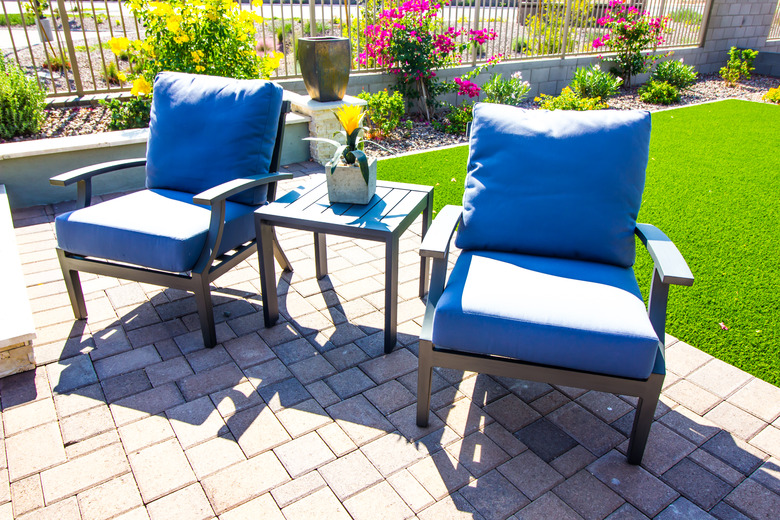How To Build A Patio On Grass
We may receive a commission on purchases made from links.
Grassy backyards are great, but if you build your patio directly on the grass, it may sink and shift on the soft soil underneath, and excessive foot traffic can kill your grass. Adding a patio is a great way to create a space to relax and socialize in your backyard, but building a patio requires taking out some of your grassy lawn to create a sturdy foundation or the patio's surface will become damaged as the grass dies below it. One of the easiest and most attractive patio options is a simple paver patio.
How to Build a Paver Patio in a Grassy Yard
1. Mark Out the Patio Space
Use stakes and a mason line or a garden hose to map out the area your patio will take up. A mason line and stakes are best for straight lines, while hoses can be preferable for curves.
2. Buy Your Materials
Measure out the space with a tape measure to figure out the square footage of the patio space in order to estimate the amount of materials you will need. For example, if your patio will be 100 square feet and you are using square pavers that are 1 foot wide, you need 100 pavers. For a 4-inch base (1/3 of a foot), you need to multiply the square footage by the depth — in this case, 100 square feet times 1/3 of a foot, meaning you need 33 1/3 square feet, or approximately 1 1/4 of a yard. You need about 1/3 of this amount of sand — in this case, around 2/5 of a yard.
Remember to purchase up to 20 percent more than you expect to need just in case.
3. Remove Grass and Soil
Use a sharp garden spade shovel to dig up your grass and a few inches of soil. Dig up 6 inches of soil to make room for 4 inches of gravel, 1 inch of sand, and 1 inch of paver so the surface of the patio will be just slightly above ground.
If your patio sits within 10 feet of your home, use a level to slope the dirt down and away from your house. A good slope should be a 1 inch drop for every 4 feet.
4. Add Gravel and Sand
Use a plate compactor to tamp the ground flat and then pour your gravel into the pit. Use a landscaping rake to even it out across the surface and then water it down and use the plate compactor to tamp down the gravel.
Add sand over the gravel, using a landscaping rake to spread it out. Spray the surface with water and use a 2x4 board to smooth the sand and a level to ensure you maintain the right grade.
5. Install the Pavers
Starting at a corner, place your pavers one at a time. Put them straight into the sand rather than dragging them and use a rubber mallet to adjust the pavers so they fit flush with one another. Use a masonry saw to cut pavers for corners and edges.
6. Secure the Edges
Secure the patio edges in place with edging stones secured with mortar or paver edging with spikes placed every foot.
7. Fill in the Gaps
Cover the patio with jointing sand and use a broom to sweep it between the pavers. Tamp down the patio. Add another layer of sand, sweep it between the pavers, and then tamp down the patio once more. Gently water down the patio with a garden hose to encourage any remaining sand to run between the pavers.
